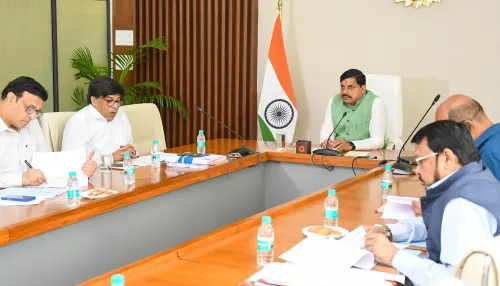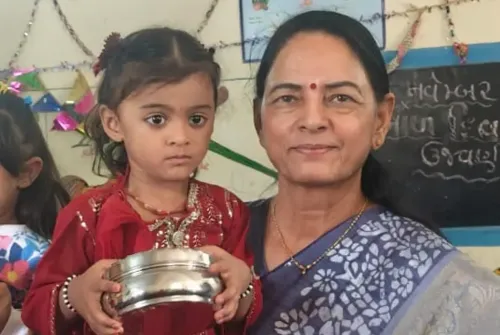How is Madhya Pradesh Supporting Farmers with Rs 653 Crore Against Crop Losses?

Synopsis
Key Takeaways
- Rs 653 crore allocated for farmer compensation.
- Compensation reached 8,84,880 farmers.
- Damage due to Yellow Mosaic Virus and excess rainfall.
- Support through the Bhavantar scheme for price differences.
- Focus on long-term agricultural strategies.
Bhopal, Oct 3 (NationPress) In a pivotal initiative aimed at assisting farmers grappling with crop losses, the Madhya Pradesh government has allocated Rs 653 crore as compensation for damages incurred due to excessive rainfall and the Yellow Mosaic Virus.
Chief Minister Mohan Yadav disclosed that the virus has impacted crops over an area of nearly 3,00,000 hectares across 12 districts within the state.
"This marks the first instance where compensation has been disbursed prior to the crops reaching market," CM Yadav conveyed to farmers via video conferencing, assuring them of ongoing support in the future.
Additionally, he confirmed that the Bhavantar scheme, designed to address price discrepancies, will continue to be available to further assist farmers.
Preliminary assessments suggest that the virus has spread across key regions known for pulse cultivation.
In Burhanpur, a banana farmer received an impressive Rs 3.6 lakh, illustrating the magnitude of individual losses.
Overall, 8,84,880 farmers from 3,554 villages have been compensated for crop damage across 6,52,865 hectares.
Among these, 3,90,275 farmers from 1,854 villages received compensation for losses attributed to excessive rainfall and flooding, which affected 3,49,498 hectares.
The Ratlam district received the highest funding of Rs 171 crore, followed by Neemuch with Rs 119 crore and Mandsaur with Rs 35 crore.
Agricultural experts estimate that the average yield loss in the affected regions ranges from 40% to 70%, depending on the severity of the infection and the variety of crops.
The Yellow Mosaic Virus is known to be a devastating plant disease that primarily affects soybean and high-protein pulse crops like urad and moong. Symptoms include yellowing of leaves, stunted growth, and a drastic reduction in yield.
Carried by whiteflies, the virus flourishes in warm, humid conditions, rendering large portions of Madhya Pradesh particularly susceptible.
The relief package initiated by the government is aimed at providing prompt financial assistance, with funds transferred directly to farmers' bank accounts through the state's digital benefit system.
The Agriculture Department is actively conducting field surveys and utilizing satellite imagery to assess damage and ensure precise disbursement.
Chief Minister Yadav reaffirmed the government’s dedication to supporting farmers during crises, especially during the festive season.
He also hinted at long-term strategies that include the development of disease-resistant crop varieties and enhanced pest management systems.
Farmers throughout the state have expressed appreciation for the announcement, albeit many are seeking additional support in terms of improved infrastructure, access to quality seeds, and timely advisories.
While the compensation serves as a vital lifeline, recovery will necessitate sustained efforts and collaboration among the government, scientists, and farming communities. This financial intervention marks one of the most substantial state-level responses to a plant disease outbreak in recent years, highlighting the increasing significance of agricultural resilience in addressing climate-sensitive challenges.









